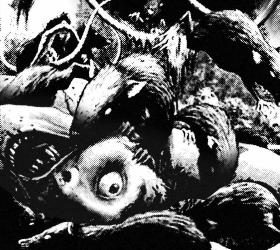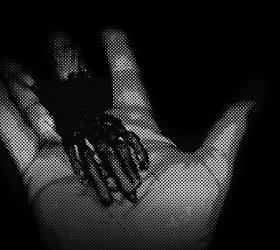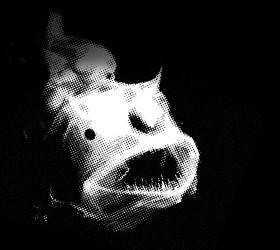Movie Night!
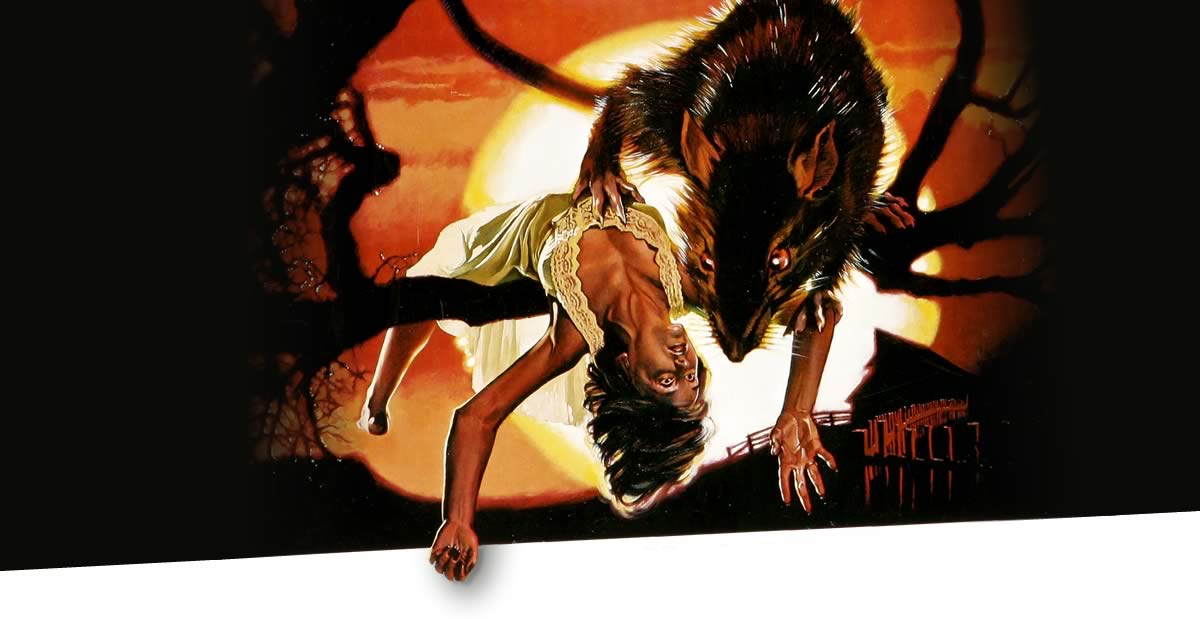
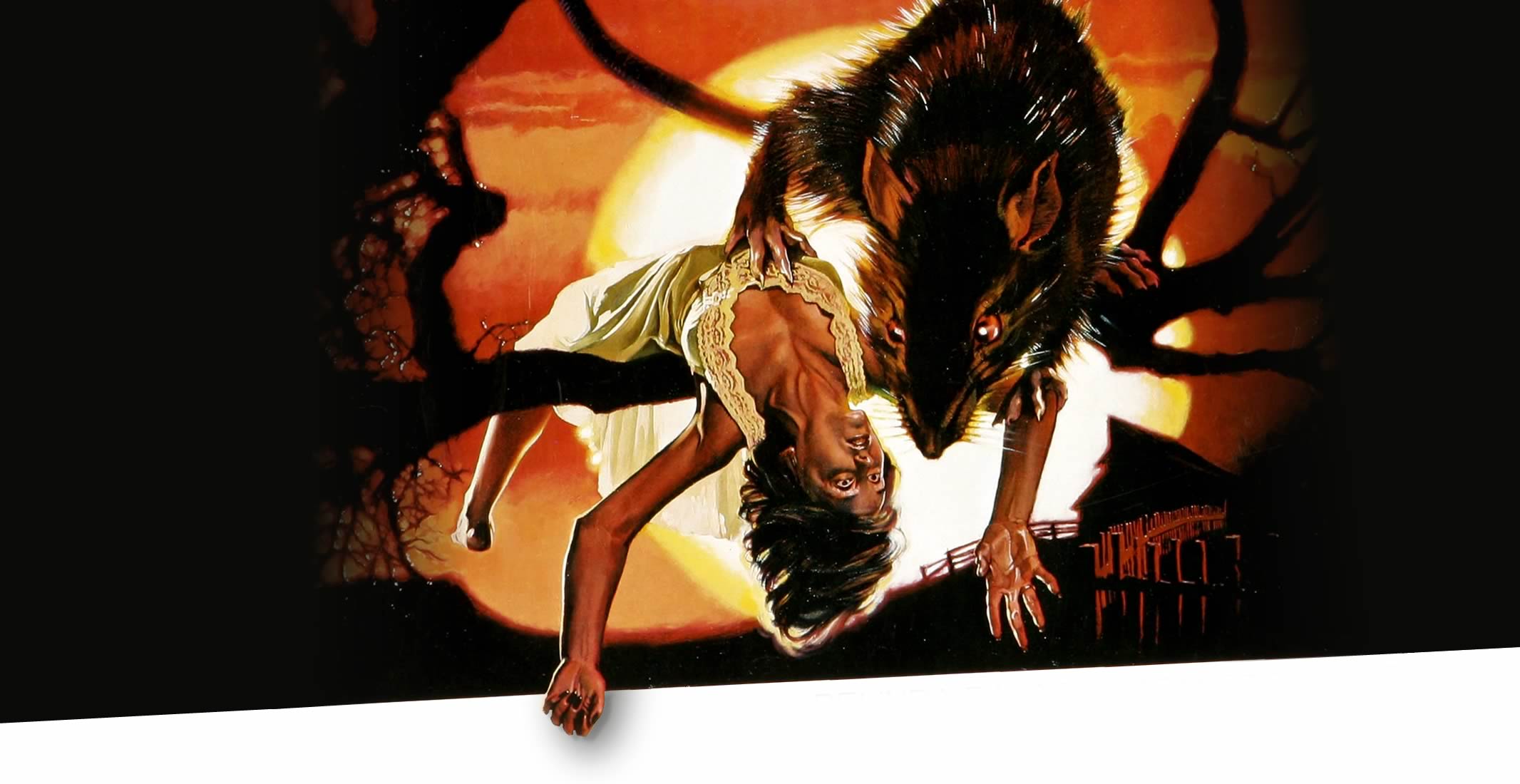
The Complete Beginner's Guide To H. G. Wells 'The Food of the Gods'
Thanks to Steven Spielberg, almost everybody knows about the horrors mankind had to face in The War of the Worlds. But only because they’ve never heard about the giant wasps from Food of the Gods!
Somewhere around 1904, H. G. Wells wrote what, for today’s standards, would be a “short novel” (one of the many crimes of our times, the artificial thickening of novels to justify inflated prices). The story, titled “The Food of the Gods and How It Came to Earth,” was divided by Wells into three main “books” contained within the novel; “The Discovery of the Food,” “The Food in the Village,” and “The Harvest of the Food.”
The story falls into the Science Fantasy genre, a category in writing we don’t see often enough nowadays. Mostly thanks to Hollywood’s attempts to cash in a few successes, namely the Time Machine and War of the Worlds, among others, both also based on H. G. Wells works, by the way), it is most likely we won’t be seeing again anytime soon. The genre has gone into obscurity.
Like many of Wells’s novels, the Food of the Gods was made into a film. In the story, a pair of doddery scientists, Mr. Bensington and Professor Redwood make a world-changing discovery: a never-seen-before form of an alkaloid which, once refined, can stimulate growth in any organic life forms.
The Food of the Gods I call it, this substance that Mr. Bensington and Professor Redwood made between them; and having regard now to what it has already done and all that it is certainly going to do, there is surely no exaggeration in the name.
They can’t help but start experimenting on their own with such a promising discovery- and who the heck wouldn’t? The world’s hunger could be solved with just a few drops of the stuff. Governments and corporations would just try to put a stop to bury the discovering.
Without losing any time, they rent a farm as far away from civilization as their finances allow them to and start using it on baby chicks. That’s when things go south of these two, as the chemical quickly gets into the environment producing giant rats, ants, wasps, and chickens which end up attacking the locals living nearby in scenes of social satire and critic like only Wells can write.
If that wasn’t enough, the scientists also ship it around the world, creating giant flora and fauna, which of course, includes insects the size of cows. But wait, it doesn’t end there, as Redwood gives it to his baby son, along with a few other babies who end up getting the compound as well.
How many big wasps came out that day it is impossible to guess. There are at least fifty accounts of their apparition. There was one victim, a grocer, who discovered one of these monsters in a sugarcask and very rashly attacked it with a spade as it rose. He struck it to the ground for a moment, and it stung him through the boot as he struck at it again and cut its body in halves.
As you can imagine, twenty years into the future, we not only have a mess in nature, but we also have giant young people walking around in a world ready to collapse. Who could have thought of such a fantastic story but the man who sent us the Martians and their ships in the middle of the night? One could read a thousand books and never come close to find a narration that feels as vivid and entertaining as the one the father of the fantastic gave us in “The Food of the Gods and How It Came to Earth.”
The story has been adapted to a series of films, an obscure Japanese radio play, and a comic book by no other than Marvel. Here’s the comic:
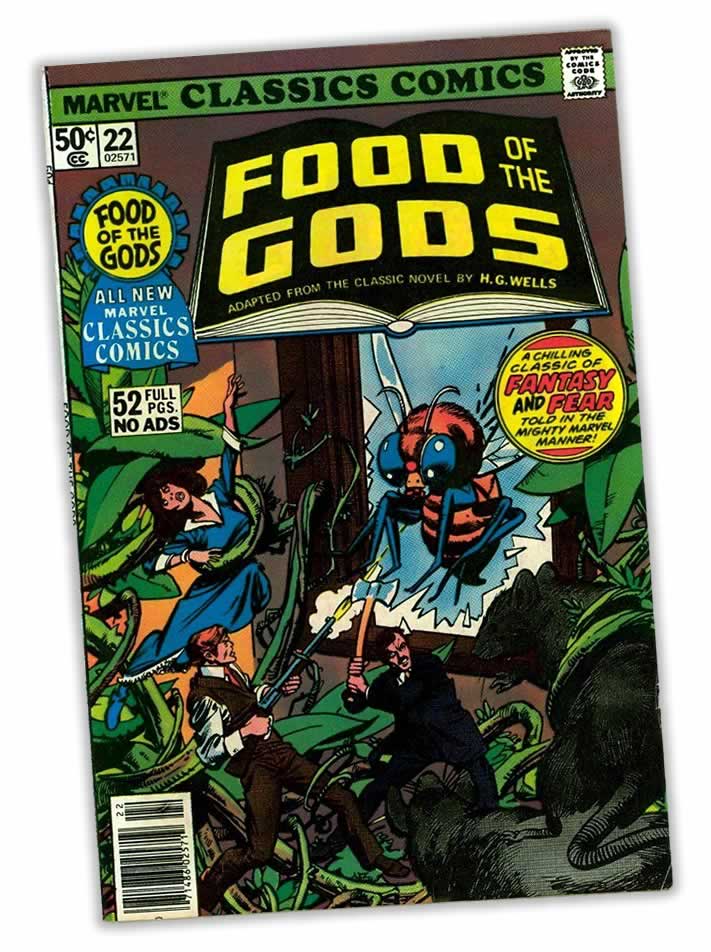
The big screen adaptations are, for the most part, a great deal of fun. Mostly because of the no-cgi effects, which are very well accomplished for the time the movies were filmed.
Village of the Giants (1965)
A substance called “Goo” (in the book is referred to as Herakleophorbia IV) is consumed by a gang of teenagers who become giants and take over the town. Not much of an adaptation, but the elements are there.
The Food of the Gods (1976)
In the opinion of many, this here is the best film adaptation of H. G. Wells’s “The Food of the Gods and How It Came to Earth.” Granted, it is not perfect, but it is not “Village of the Giants” either. Strangely enough, this movie was also written, produced, and directed by Bert I. Gordon, the fellow. He wrote, directed, and created the lesser quality “Village of the Giants” adaptation to Well’s work. As an interesting trivia, the actress who plays Rita (Belinda Balaski) was also the same actress who played Mrs. Joe Harris in Gremlins and Terry Fisher in The Howling.
Food of the Gods, Part 2 (1989)
Other than the title, giant rats and lab coats, this has little to do with the first film. The movie does have more elements from the book than the previous two attempts, unfortunately, they are used to make an entirely different story. Thus, this movie has little to do with the book, although from the three, it comes as the second most enjoyable after the 1976 version.
The Food of the Gods (Radio Show, Japan)
Unfortunately, there is no recording available of this Japanese radio play, which was done by a pirate radio station in the late 60s. There was, I been told, a microcassette with a portion of the ending circulating among microcassette aficionados which I am still trying to get a hold onto, so if you know something about it, please write.
Undoubtedly, “The Food of the Gods and How It Came to Earth” is one of the greatest and more terrible stories ever told. To many, myself included, the book falls into the same category as The War of the Worlds. Yet, it hasn’t been properly adapted to a motion picture, though many brave attempts were made.
It is only a matter of time until the giant children from Wells’ story become adults and take over the big screen with the respect and seriousness the work deserves. Perhaps now that Hollywood seems to have left cheap screams and Theremin-made music behind, it will be a good time for them to do so.

